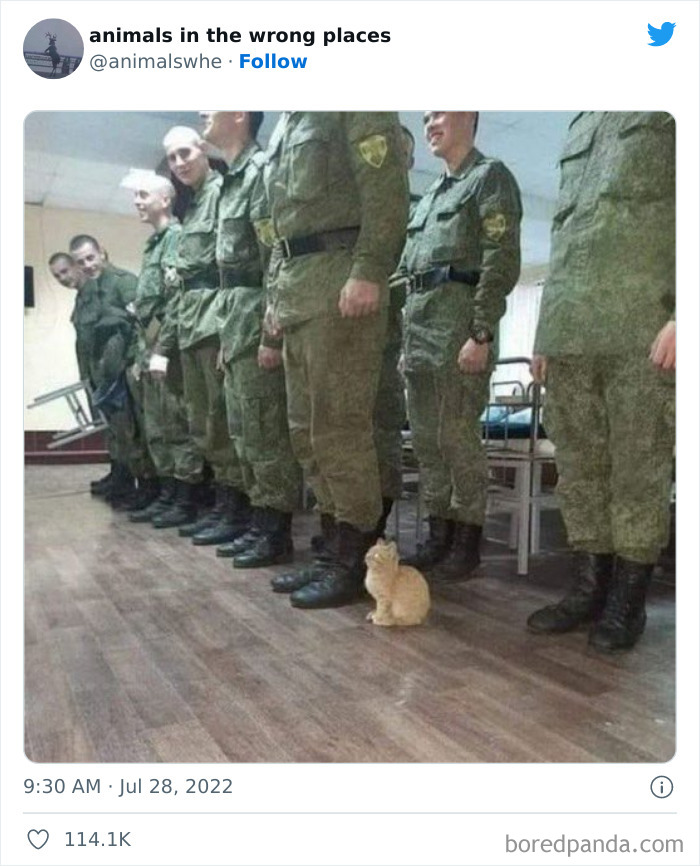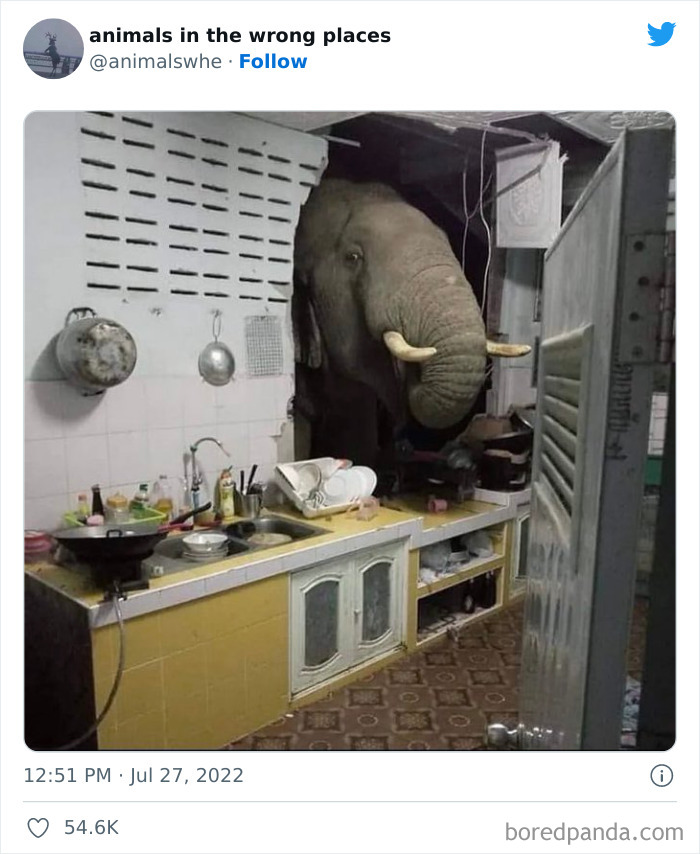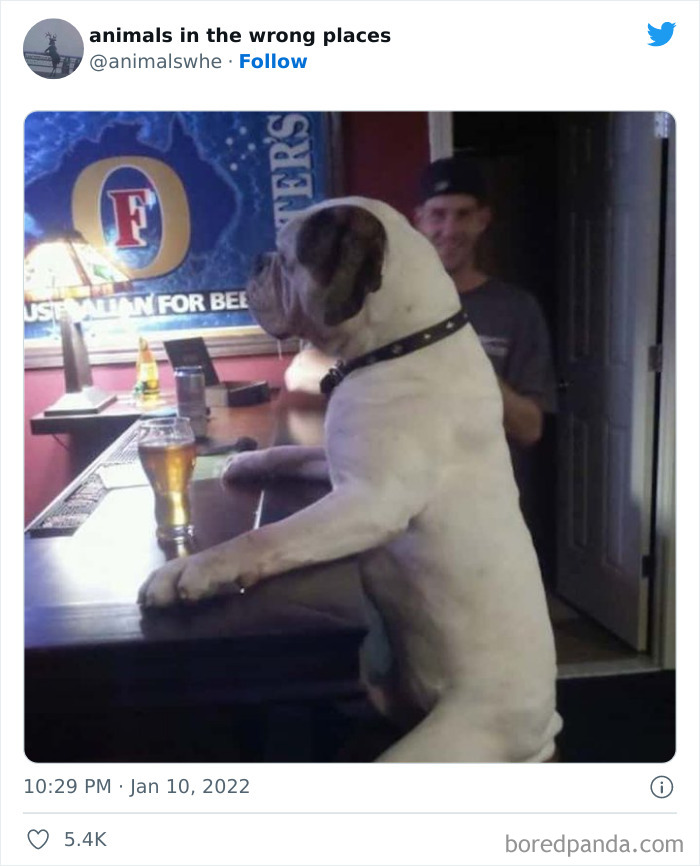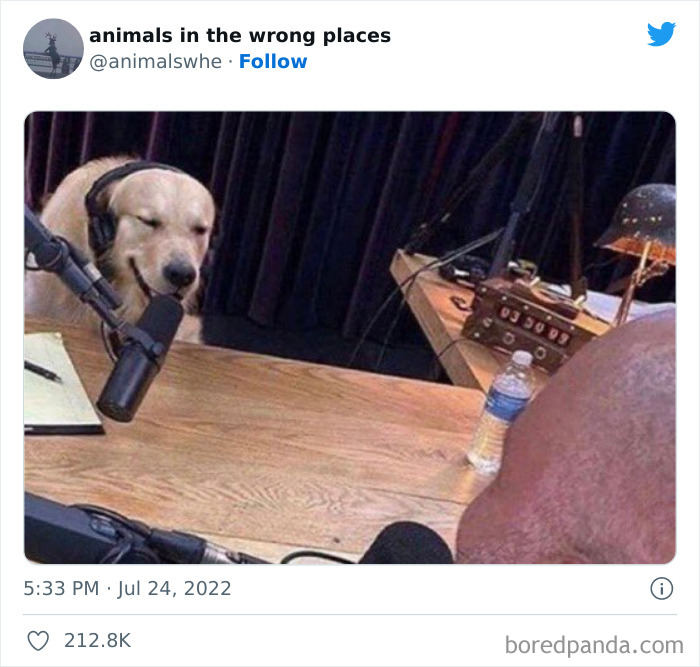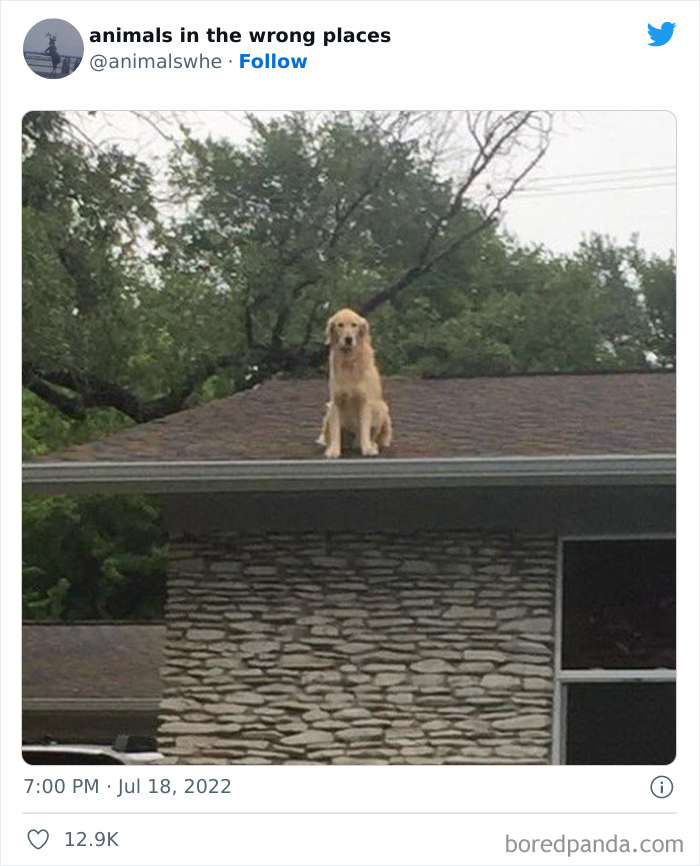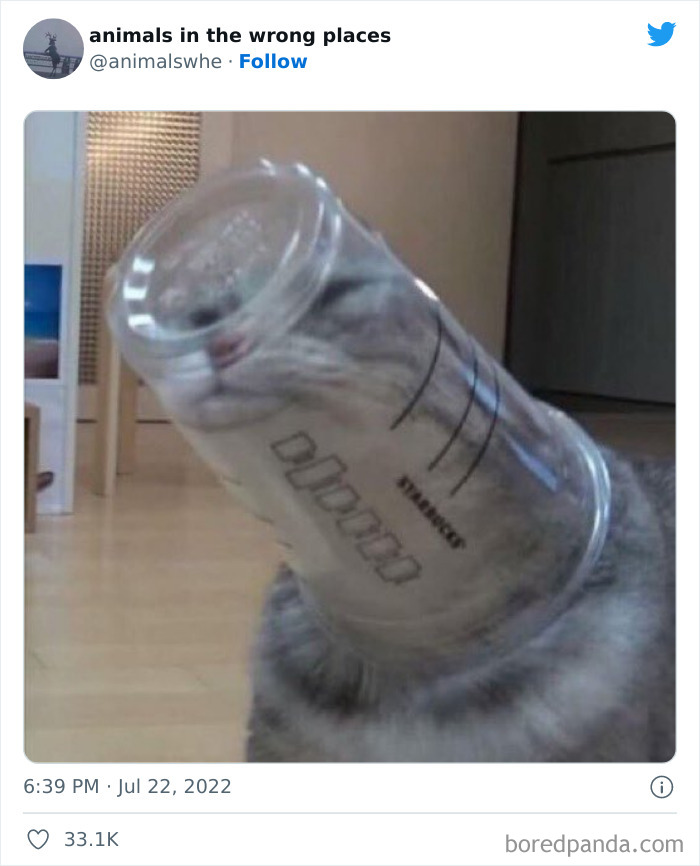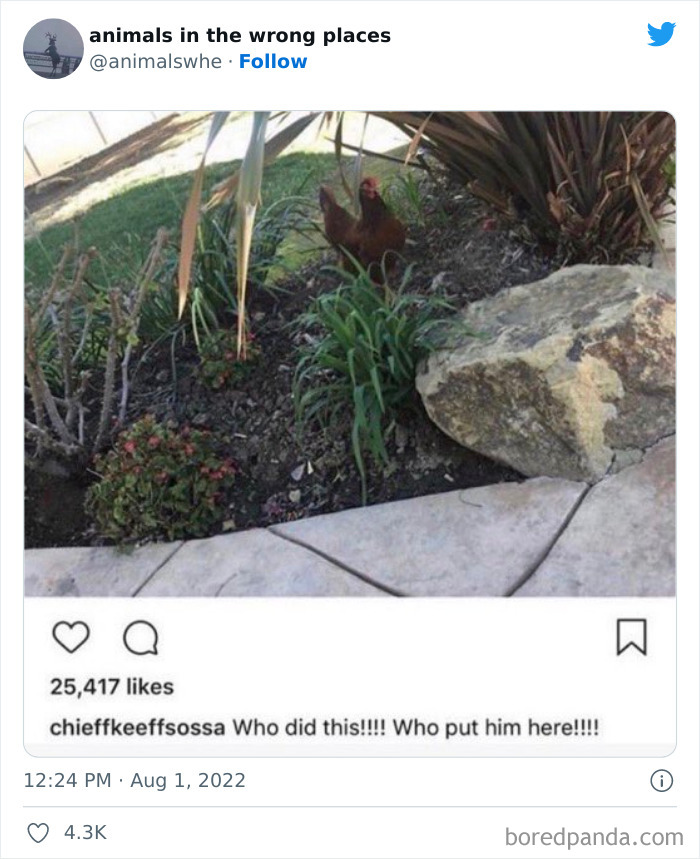
35 Times People Spotted Animals In Places They Shouldn’t Have Been And Submitted Pics To This Twitter Account
We are used to seeing bears in the woods and ducks in the ponds but that doesn't mean these creatures are lousy explorers.
On the contrary, as the Twitter account 'Animals in the wrong places' can quickly prove, they too like inspecting their surroundings, even if it sometimes means invading human areas.
Even though the account was created in January 2022, it already has 229,000 followers, and many of them even contribute to its feed, which is fueled in part by submissions via direct messages.
More info: Twitter
This post may include affiliate links.
To find out how to act when you meet some of the most common animal wanderers, we contacted the UK's leading veterinary charity, The People's Dispensary for Sick Animals or PDSA.
"If you find a healthy-looking dog without an owner in the UK, it is likely to be lost rather than a stray," PDSA vet Claire Roberts told Bored Panda.
"Legally, all dogs should be wearing a collar with their owner's name and address on the tag. If it is safe to approach the dog then you can check to see if you are able to contact the owner. Scared dogs may lash out so keep an eye on their body language and don’t approach them if you have any concerns."
Roberts explained that dogs and puppies over eight weeks old are required to be microchipped by law in England, Scotland, and Wales, so if you are able to, contact the local vets who should be able to scan for a microchip. This holds true in many other places too. "If you are not able to transport the dog to the vets, feel uncomfortable approaching them, or if the dog is not microchipped then you will need to report the dog to your local council," Roberts added.
On the other hand, the vet highlighted that it can be hard to be sure if a cat is a stray as many of them roam freely in their neighborhood. "If you spot a cat you think is a stray, you can ask around your neighbors or on social media to see if it belongs to anyone - you might be surprised as some cats have several families that they visit regularly! You can also print out a paper collar with your contact details on it, asking the owner to contact you."
"Cats are not currently legally required to have a microchip, but your local vets may be able to scan the cat to check. As with dogs, only approach the cat if they seem friendly and you are comfortable doing so," Roberts said.
It's important to remember, however, that some critters are less fortunate than others. "If a stray cat or dog is injured or ill, then the best thing to do is call your local vets to discuss how they can help," Roberts said.
"Most vets will be able to provide initial help if you are able to get the animal to them, especially if they are sick or injured."
The PDSA vet advises being gentle when handling these animals as they may be in pain or unused to human contact. "If you're not sure how best to help, or you do not think that you would be able to transport them, you may need to call an organization who looks after injured strays, such as the RSPCA or Cats Protection," she said.
Running into some of these animals might seem impossible, but when you think about it, there's a pretty good chance you'll be able to take a similar picture at some point in your life.
For example, in downtown Chicago, a coyote can easily make a den in a cemetery—as insane as it sounds, there are up to 4,000 of them living in the area.
And in Los Angeles, a mountain lion can roam the Hollywood Hills, tiptoeing around throngs of tourists without ever being seen.
As people flock to cities like never before—six billion are expected to live in urban areas by 2045—they're not alone.
Attracted to plentiful food and mostly protected from hunting, among other natural dangers, a colorful variety of creatures are also moving into cities.
Several species have adapted to living in much tighter urban spaces than they do in the country. Some have become active at night when people aren’t around, and perhaps most crucially, many have figured out how to navigate busy roads without getting hit by a vehicle.
"We forget that we are the biggest cause of evolution on the planet right now,” Suzanne MacDonald, a psychologist and biologist at York University in Toronto, Canada, who studies urban raccoons, told Nat Geo.
"We have this view of the wild as a pristine place" and of evolution as something that happens "in the wild," she said. "But humans in cities are changing the animals now."
Boris fell in love with a new lass, but as he had missed his last optometrist's appointment, it took him a while to understand why his love had so far been unrequited.
"I shall take no b***h, hold no sticks, father no pups. I shall wear no collars and win no pets. I shall live and die at my post. I am the watcher of the roof."
And with so many animals going urban, humans must view cities as part of—not separate from—nature, adds MacDonald.
"To live in harmony with animals whose habitat we’re destroying, we’re going to have to do a lot more work in what we’re doing to them."
Intrigued by the innovativeness some of the species display, urban ecologists are studying whether city animals are craftier than their rural counterparts at tackling challenges.
The Barbados bullfinch, for instance, sure seems to be. The island native has made a name for itself by stealing sugar packets from restaurant terraces.
Bert did not like to take directions from others, and insisted in making his own way in the world. Even if it took a little longer at times.
In lab experiments, Jean-Nicolas Audet, a biologist at Montreal’s McGill University, tested the problem-solving skills of finches captured from rural and urban areas.
Turns out, the city birds can see food inside a semi-transparent plastic box, and could access it by opening the lid or pulling a drawer.
In both experiments, they performed better at getting the food, according to a 2015 study in the journal Behavioral Ecology.
As scientists dig deeper into how animals adapt to city living, they're also starting to ask whether they’re actually evolving in response to this new environment.
It could be a case of extremely rapid evolution or the species we see thriving in cities are those that already had adaptations that make them more likely to succeed in such a setting.
Whatever the case might be, 'Animals in the wrong places' shouldn't run out of content anytime soon!
I must confess I'm a little disappointed. The article title says “Animals In The Wrong Places”, yet all these animals seem to be in exactly the right places!
I always ignore the titles since they hardly ever fit the content! Lol
Load More Replies...Why the heck did BP curtail this at 35 images when there were 36? Sheesh!
Too funny, thanks a lot for publishing this post, it made me smile, giggle or LOL!!!
I must confess I'm a little disappointed. The article title says “Animals In The Wrong Places”, yet all these animals seem to be in exactly the right places!
I always ignore the titles since they hardly ever fit the content! Lol
Load More Replies...Why the heck did BP curtail this at 35 images when there were 36? Sheesh!
Too funny, thanks a lot for publishing this post, it made me smile, giggle or LOL!!!

 Dark Mode
Dark Mode 

 No fees, cancel anytime
No fees, cancel anytime 


